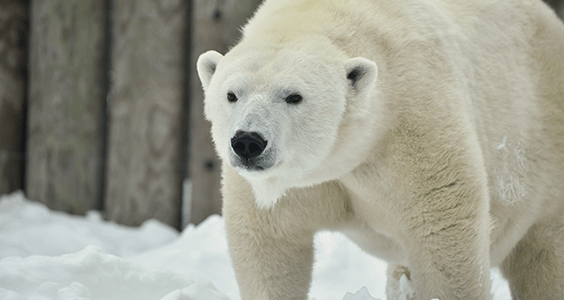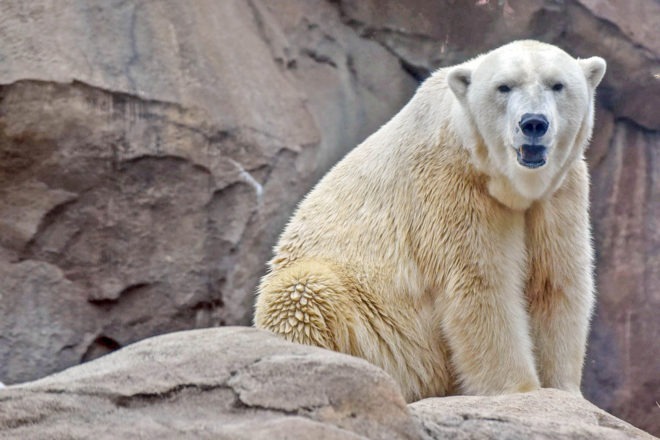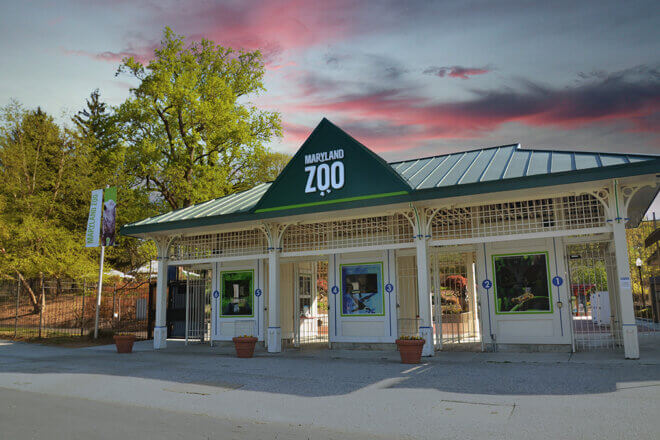Anoki, the Maryland Zoo’s female polar bear, will be back in her Polar Bear Watch habitat this week as she leaves her den without giving birth to a cub. “We have been monitoring her behavior via camera throughout the denning season. While she was content and snug in her den, we were hopeful for a cub,” said Erin Cantwell, mammal collection and conservation manager at the Zoo. “However, the usual time frame for a polar bear to give birth has come and gone. Anoki became more active this week, and by noting her behavioral changes we knew she was ready to leave the den.”

In February of 2017, Maryland Zoo staff teamed up with the Cincinnati Zoo’s Conservation and Research of Endangered Wildlife (CREW), to participate in a reproductive research project by artificially inseminating Anoki. It was the fifth polar bear artificial insemination for the CREW team.
“Low reproduction success is one of the biggest factors affecting the zoo polar bear population, and participating in such ground-breaking research to contribute to the overall knowledge of polar bear reproduction has been a great experience,” continued Cantwell. “We always said that no matter the outcome, we are proud to partner with our Zoo colleagues on behalf of endangered species. We look forward to continuing our work with CREW and hope to do the procedure again this year.”
Polar bear reproduction is a complex process hinging on “delayed implantation,” meaning that polar bears breed in the spring but the embryo does not become implanted until four to six months later. In order for the embryo to implant and develop into a cub or cubs, the female must feel that all conditions are perfect — she must be well fed and the right weight, while finding a safe, quiet place to create her den and give birth or her body reabsorbs the embryo. “We’ve kept detailed records of every data point that could possibly affect the reproductive process with Anoki,” continued Cantwell. “All of this information will be compiled and studied as part of the overall research, and hopefully we can find ways to improve the process even more going forward.”
“Even though the artificial insemination last February did not result in a cub this time around, Anoki made a significant contribution to the science of polar bear reproduction,” stated Dr. Ellen Bronson, Director of Animal Health, Conservation, and Research at The Maryland Zoo. “By participating in this complex procedure, we will hopefully be one step closer to success in Anoki or another female polar bear at one of our partner zoos or aquariums the next time around.”
Read more and see a video about Anoki’s participation in this reproductive research project






Share this article